A HERETIC I AM
A HERETIC I AM's JournalSome insight into US Mail shipping and how to package items for it, from someone who hauls it.
Sorry this is a bit long, but I hope to help you, dear reader, understand a bit more of what happens behind the scenes.
First, let me state that I work for a Postal Contractor and I am NOT an employee of the US Postal Service, so I do not speak for them in any official capacity, but I and my coworkers, along with tens of thousands of other drivers in this segment of the trucking industry, have an ID badge that will let me in the back door or onto the loading dock of virtually every postal facility in the country.
Also, this is by no means meant to be a comprehensive look at all aspects of mail transport. I'm just trying to give you an idea of what happens between the time you put a package into the system and when it arrives at the destination.
Last night I ran a short trip to the Post Office in a nearby medium sized city. The dock wasn't too busy so I took the opportunity to grab a few photos of my inbound and outbound loads in order to provide a little insight on how your packages are handled when they move between cities.
The first photo is inside the 53' trailer I pulled down from a large Network Distribution Center (NDC) to this local Processing and Distribution Center (P&DC). The trailer is loaded to the tail with "Gaylord" boxes on pallets. Each box is labeled with the destination zip code for the contents. That piece of paper is what is scanned as it comes off the truck, NOT the individual packages inside. That individual scanning may or may not occur later, depending on what happens to that particular container, whether it goes inside the facility for further sorting or is a "cross-dock" situation where it comes off my trailer and straight onto another truck;
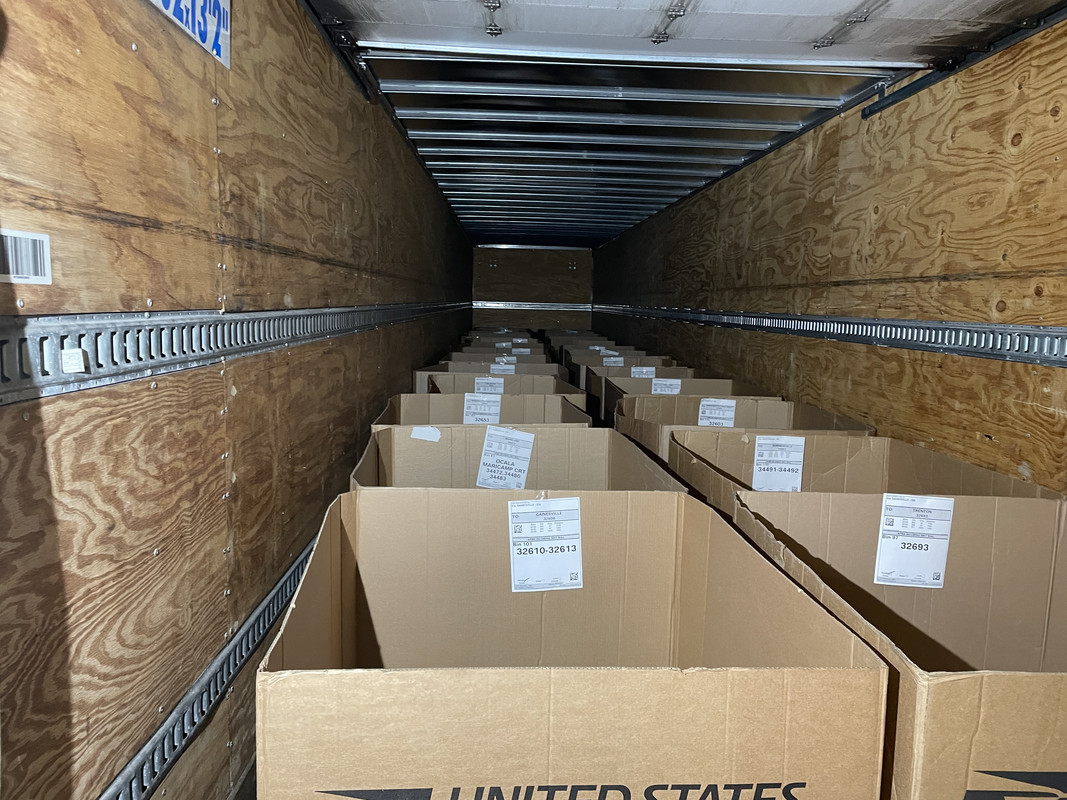
These Gaylords are used year round, but their frequency increases this time of year. They are almost always loaded with parcels or similar bulk items, as opposed to loose, unsorted mail because they are not attached to the pallet. Very often they are loaded with a small fraction of their capacity, as shown below.
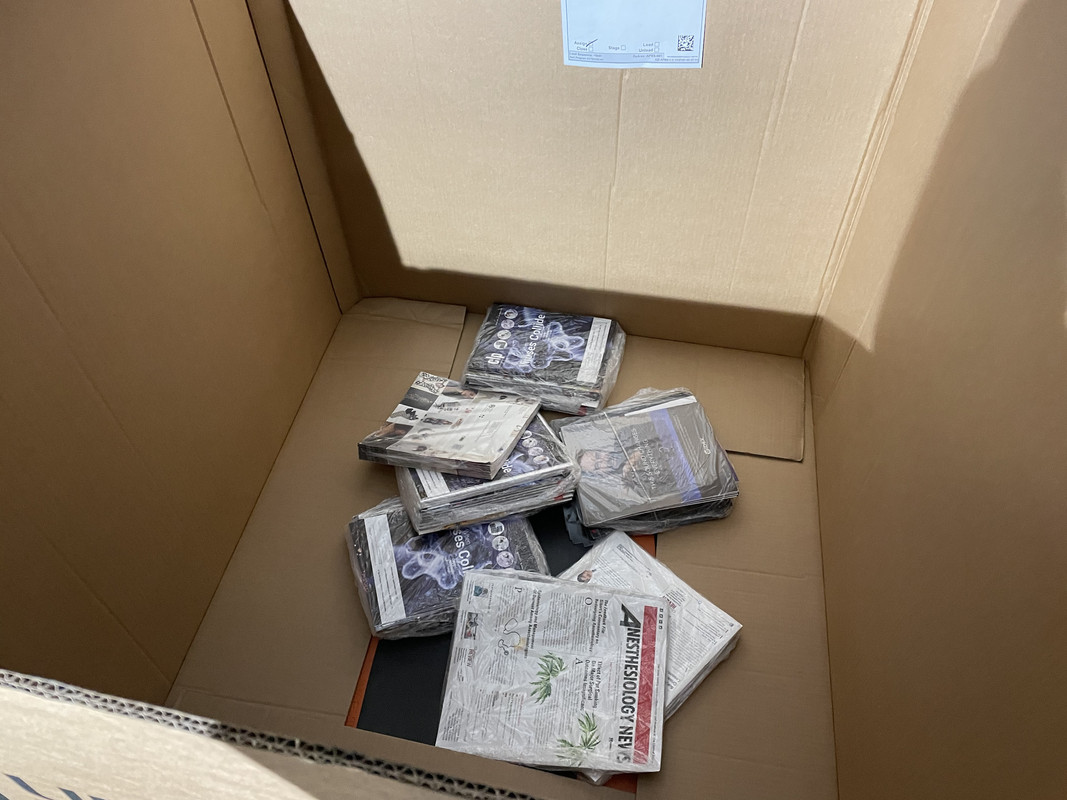
Because they are not attached to the pallet, they can and sometimes do slide off the pallet when being moved. This is not a regular occurrence, but it does happen.
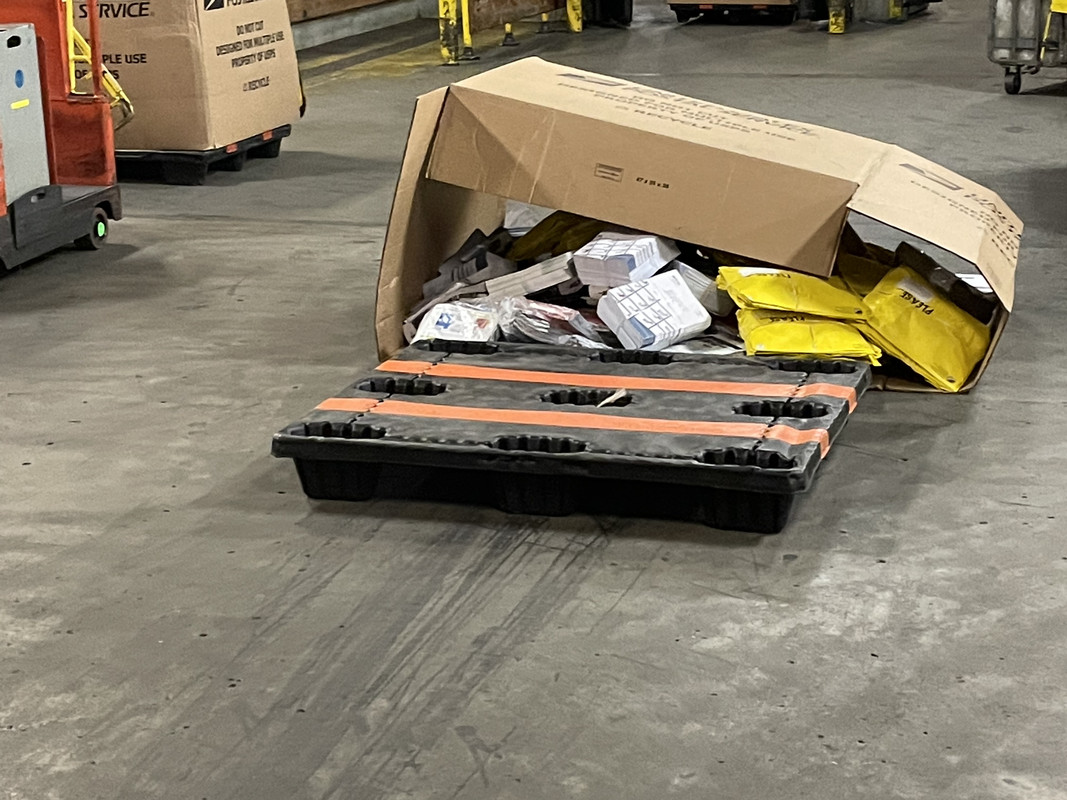
The inbound mail has been offloaded and now the outbound is being loaded. These are "General Purpose Containers" or "GPC's (often called "Jeeps" ) and are just about the most common container I and others haul that is on wheels. These are used solely on trucks and NOT on the smaller blue van that comes by your house. Note the yellow metal device. That is a tow bar that has a spring to keep it upright when not in use. It allows these units to be towed by a tug and to have several of them strung together like a train. These tugs are in almost all the larger facilities in the country and are used to pull not only GPC's but the other types of rolling stock I show below. They will move them to and from the loading dock to a particular sort line or crew, depending on mail type and zip code. I took this picture particularly because of the way it is loaded and with what. Those are all identical Priority Mail boxes, probably from the same shipper. Note that they are not stacked neatly. This is because of the massive volume and time constraints in the major sorting centers where this type of mail is handled. There is just no way to properly stack each and every box, so.....bearing in mind the picture directly above, here is the first lesson I want to impart in this thread;
PACKAGE YOUR ITEMS IN A BOX LARGER THAN YOU THINK IS NEEDED AND PAD THE ITEM EXTREMELY WELL, ESPECIALLY IF IT IS FRAGILE IN THE SLIGHTEST.
Writing "Fragile, Handle With Care" on the outside of the package is pointless, trust me. It isn't as if no one cares, its more like, as I said above, the volume handled is just enormous. Postal workers just simply can not take the time to be as careful and delicate with your package as you might think they should be. This goes for UPS and FedEx as well. There is just no point in telling them something they are not prepared (or even able) to pay any attention to, so save your money buying useless Fragile labels or writing on the package!
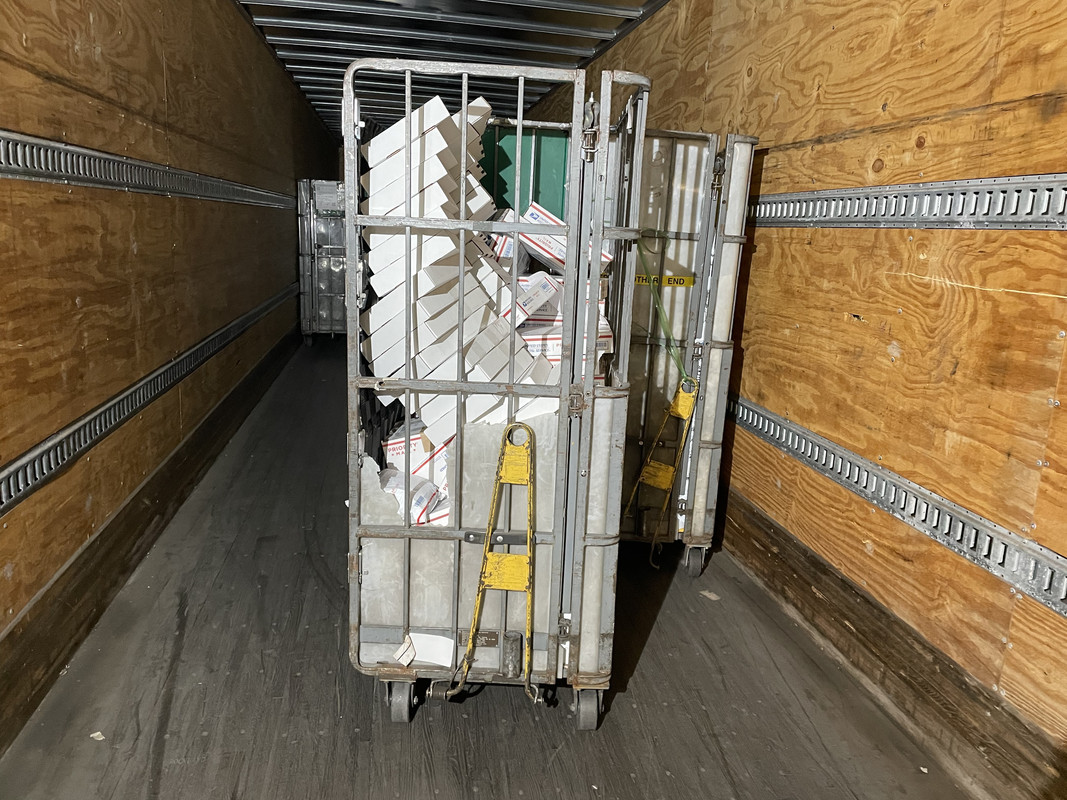
This is what one of the Tugs looks like. They are able to pull all sorts of different devices and containers. They are all battery powered electric and the operator stands while riding it. Toyota also makes these.
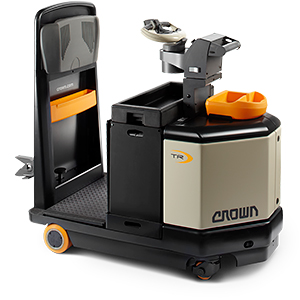
This shot shows the netting that holds the mail in on many of these GPC's. Some have hard metal cage like fronts, but this style is very common. The latches that hold the netting in place can sometimes fail, and mail will fall out onto the floor, so again, package your items with these sorts of things in mind. You can see through the netting that the items inside are literally tossed in there.
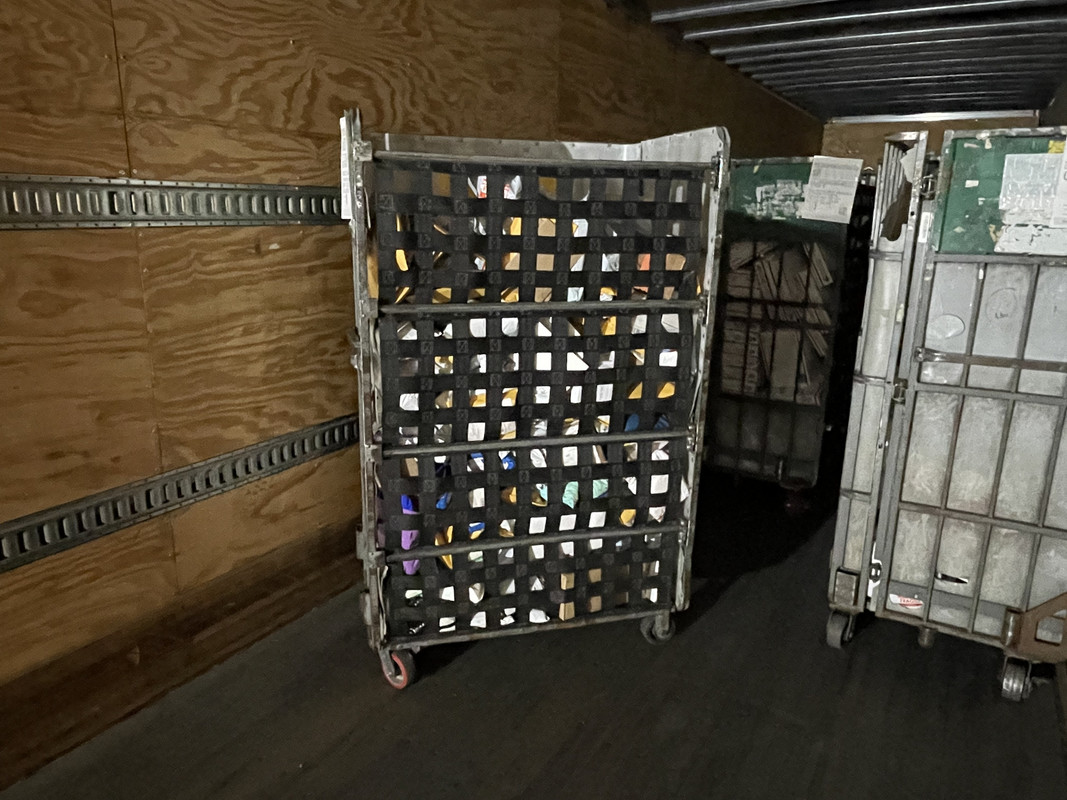
GPC's will fit 3 across in a trailer or, when turned sideways, 2 across.
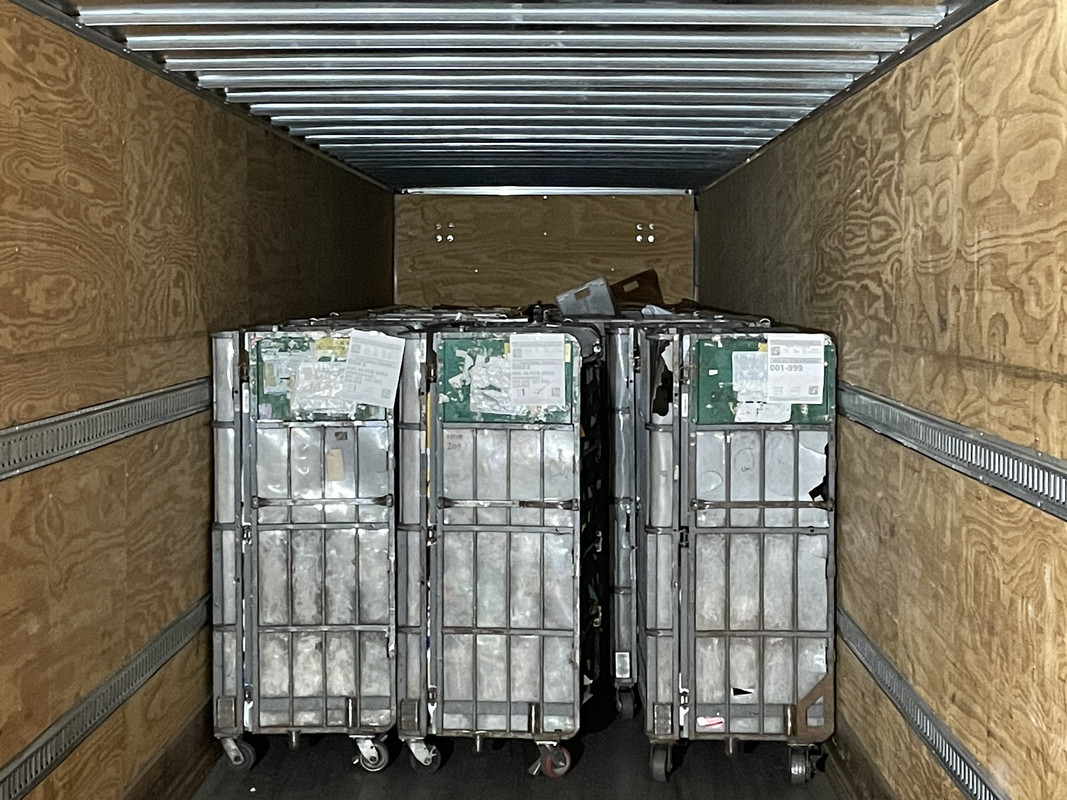
This photo shows the 3 primary types of wheeled containers I carry. On the left is an "OTR" or Over the Road" container, the short, square one is a Rigid Wire container, often referred to as simply a "Wire" as it is a wire framed box on wheels. These can be stacked 2 high and still fit inside a trailer. The ones on the right are more GPC's. I did not take this photo, but it does give an idea of the massive size of some of the buildings in the US Mail system. (Edit: The "CIN BMC" stands for Cincinnati Bulk Mail Center" The use of the descriptor "Bulk Mail Center" has given way to "Network Distribution Center". Even though it says that, the CIN BMC does not really own this unit, they probably stenciled it on there to give it a home. It might sooner or later get back there, but no one is falling over themselves to send it back to southern Ohio!)

This is a shot I took earlier in the year inside a newer P&DC in Portland, Oregon. It's actually right on the Portland Airport property. From that spot to the far wall is about 200 yards. Just on the other side of that yellow upside down "U" shaped bollard is a line of new sorting machines. There is a similar line opposite, on the right. Here is where that building is. It is typical for a major P&DC, but certainly not the largest, by any means, measuring 1166' X 670' or about 18 acres under one roof. This facility has about 85 loading bay doors. The NDC I haul out of regularly has 166. The primary difference between an NDC and a P&DC is the latter "Sorts for the street", handles semi truck traffic as well as straight trucks and loads the blue trucks that come by your house. An NDC handles ONLY tractor trailers and large straight truck traffic and only sorts down to Zip Code.
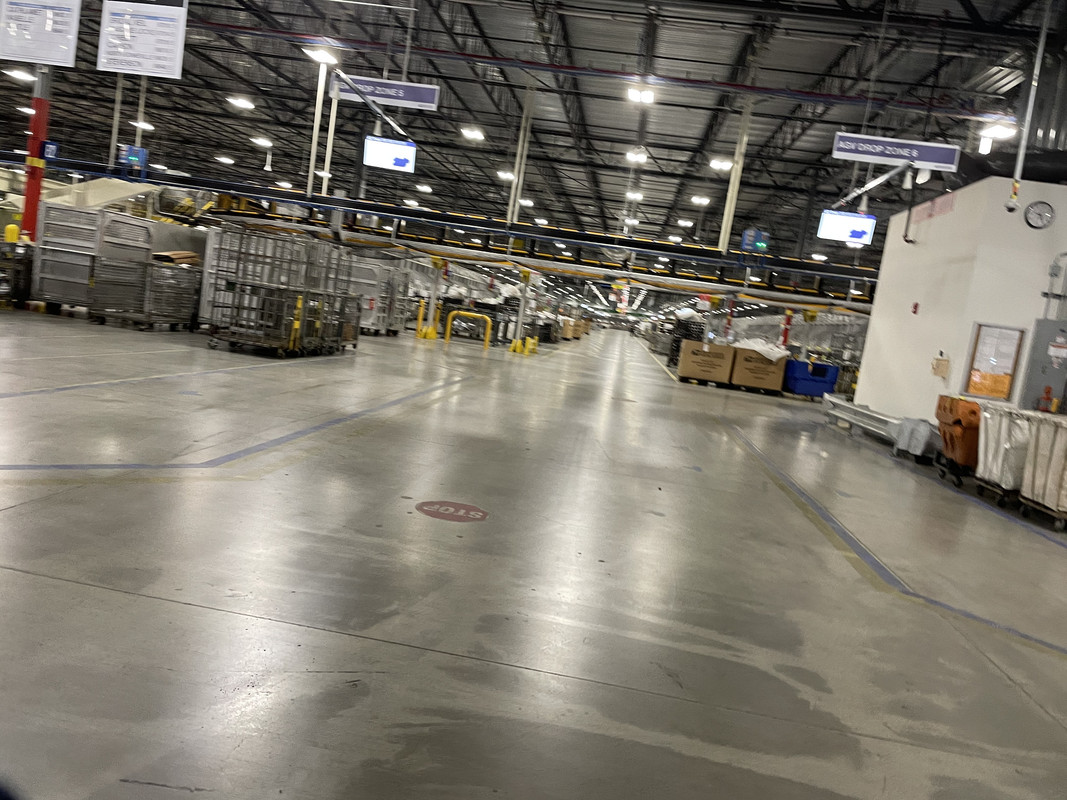
One of the issues that result in damaged or destroyed mail is improper loading of trailers. It's clear that the Gaylords are no match for a large, aluminum OTR container. What happens sometimes is a Mail Handler will load a trailer with Gaylords and then just before the trailer is to depart, the sort line will send out a couple wires or OTR's at the last minute (Our trips are scheduled like an airline, so this sort of latecomer is not unusual). The equipment is held in place by ratchet straps, so if the heavier equipment is loaded behind the lighter boxes, and no strap is installed to keep them from rolling forward, the Gaylords can and do get crushed when the truck driver has to apply his brakes hard. This sort of thing happens all too frequently but it isn't common, I would say. The facilities that have good dock managers who train their personnel properly and those people are conscientious, tend to make sure that sort of situation is mitigated. It is the often overworked or poorly trained people that load trailers improperly, and that is where problems arise.
Very often I am picking up a loaded trailer with a seal on the door, so I have no idea how it is loaded. Also as regularly, I do a "Swap" where another driver will meet me halfway to a destination and we will swap trailers, and I will have no idea how his trailer is loaded either.
Last year I had a situation where the trailer was loaded improperly and a hard braking incident occurred. 2 or 3 heavily loaded OTR and wire containers slid forward into several lightweight Gaylords, basically destroying them and spilling mail on the floor of the trailer. When the trailer was loaded, ratchet straps were placed across the trailer, holding in the last pieces of rolling stock. But when the braking occurred and the equipment slid forward, these straps are now doing nothing, and it allowed the rolling stock to move about until the trailer hit the dock at the destination. The majority of the mail survived OK and was picked up off the floor of the trailer and placed in a wire for re-sorting but a few pieces were caught under the wheels of the rolling stock and were obliterated.
One piece in particular caught my eye and I picked up what was left of it. It was a small "Baby Yoda" type doll that some loving person was sending to a child, and it would never arrive. The package and the address on the package were completely destroyed so as to make it impossible for it to be reconstructed. The package was no bigger than the item and was basically a toy off the shelf placed in an padded envelope. Based on what happened inside the trailer, the little guy didn't stand a chance. I'm not trying to be flippant here. I was truly saddened to know that this item was lost forever to the sender as well as the recipient. There was absolutely nothing that could be done. It went into the trash.
So PLEASE...package your items for shipment PROPERLY!! Pack them extra well, in a box at least half again as large as the item. Don't use padded envelopes for anything that isn't flat. Use bubble wrap and similar materials for padding inside the box. Consider that you are shipping a fresh egg and the packaging should be such that it can survive being thrown against a wall, or dropped off a 2 story building.
With very few exceptions, the people that work in this industry, both US Postal workers as well as FedEx and UPS really and truly do want to get your packages delivered on time and safely intact, but sometimes things happen that makes this impossible or delayed. You can help by properly preparing your item before it hits the loading dock.
Most of you know this, but the Zip Code is the MOST important line on an address. ALWAYS set the Zip Code apart from the state and if possible, make it a larger type.
Knowing what I know now, when I prepare a label or even a letter, I set out the address like this;
Joe Schmoe
123 Buggerall Blvd
Crapville, OK.
12345
I will make the zip code stand out because postal workers and scanning machines read addresses from the BOTTOM up, not the top down.
If you are at all interested in learning more about the equipment used and the procedures for them, this document discusses them in detail;
https://apwu.org/sites/default/files/po502_0.pdf
Thanks for taking the time to read this through. I hope I have shared some information that you found valuable.
Have a safe, healthy and happy holiday season!
Profile Information
Name: SchmengieGender: Male
Hometown: Podunk, FL
Home country: USA
Current location: Various.
Member since: Mon Aug 4, 2003, 03:56 PM
Number of posts: 24,366